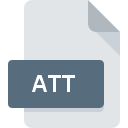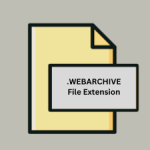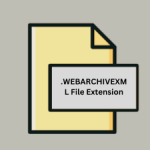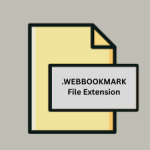.ATT File Extension

What is an ATT file?
.ATT file extension represents a Web Form Post Data file, encapsulating information transmitted via web forms.
These files are generated when users interact with web pages containing forms, such as registration forms, contact forms, or search queries.
Upon submission, the data entered by the user is packaged into a .ATT file, ready for processing by the web server.
More Information.
The inception of .ATT files coincide with the rise of CGI (Common Gateway Interface) and server-side scripting languages in the early days of the World Wide Web.
Initially, these files served the fundamental purpose of facilitating communication between the client-side interface and server-side scripts.
They enabled web developers to extract and manipulate user-submitted data efficiently, paving the way for dynamic web applications.
Origin Of This File.
The origin of .ATT files can be traced back to the evolution of web technologies and the need for efficient data transmission. With the proliferation of web applications and dynamic websites, the requirement to handle user input seamlessly became paramount.
Consequently, the .ATT file extension emerged as a standardized method to encapsulate form data for backend processing.
File Structure Technical Specification.
.ATT file exhibits a structured format designed for easy interpretation and processing. It comprises key-value pairs, where each pair corresponds to a form field and its respective value.
The structure adheres to the principles of HTTP POST requests, with data encoded in formats such as URL-encoded or multipart/form-data.
Technical specifications dictate that .ATT files adhere to certain conventions to ensure compatibility across different web servers and scripting environments.
Additionally, the file structure may include metadata indicating the content type and character encoding, enhancing interoperability and data integrity.
How to Convert the File?
Converting .ATT files to other formats or processing them for analysis often require specialized tools or scripts. Several approaches can be employed for conversion purposes:
- Custom Scripting: Develop custom scripts or programs to parse .ATT files and extract the desired information in a suitable format, such as CSV (Comma-Separated Values) or JSON (JavaScript Object Notation).
- Third-Party Software: Explore third-party software solutions designed for handling web form data files, which may offer conversion functionalities along with other features for data manipulation and analysis.
- Server-Side Processing: Leverage server-side scripting languages like PHP, Python, or Perl to process .ATT files directly within web applications, enabling real-time conversion and integration with backend systems.
The choice of conversion method depends on factors such as the complexity of the data, the intended output format, and the available resources and expertise.
Advantages And Disadvantages.
Advantages:
- Efficient Data Transmission: .ATT files streamline the transfer of form data between client and server, optimizing performance and responsiveness.
- Flexibility: The structured format of .ATT files accommodates various types of form inputs, including text fields, checkboxes, dropdown menus, and file uploads.
- Security: By segregating user input into discrete files, .ATT files mitigate the risk of data tampering and injection attacks, enhancing security posture.
Disadvantages:
- Parsing Overhead: Processing .ATT files on the server-side necessitates parsing and decoding, which can incur computational overhead, especially for large datasets.
- Compatibility Issues: Differences in encoding schemes and server configurations may lead to compatibility issues when handling .ATT files across disparate environments.
- Data Integrity Concerns: Inadequate validation and sanitization of form inputs can compromise the integrity and reliability of .ATT files, potentially leading to erroneous processing or security vulnerabilities.
How to Open ATT?
Open In Windows
- On Windows systems, .ATT files can be opened using text editors like Notepad or specialized web development tools such as Adobe Dreamweaver or Microsoft Visual Studio.
Open In Linux
- Linux distributions offer a plethora of text editors and development environments, including Vim, Emacs, and GNU Nano, which are suitable for accessing .ATT files.
Open In MAC
- MacOS users can employ text editors like TextEdit or advanced IDEs like Sublime Text or Atom to view and edit .ATT files.













